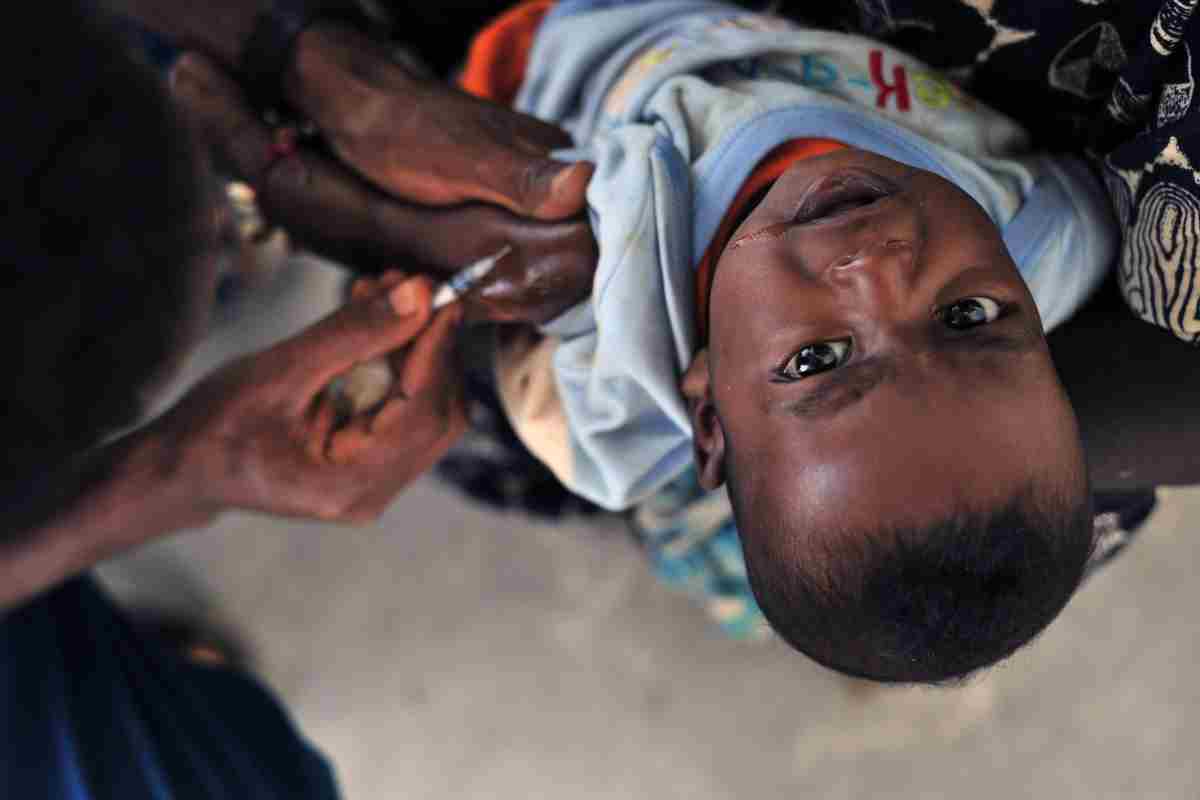
Poliomyelitis: what it is, what causes it and which vaccines combat it
Poliomyelitis, a terrible disease that could be eradicated from the planet within a few years. But one must not let one’s guard down also in the light of the reappearance of the virus, in its vaccine-derived form, in countries where polio had disappeared decades ago
THE GOAL OF A POLIO-FREE WORLD
The complete elimination of the polio virus is now more and more within reach following major advances in recent years.
Suffice it to say that since 1988, i.e. since the World Health Organisation launched the GPEI (Global Polio Eradication Initiative) programme, human cases of this dreadful disease have fallen by 99.9%.
Of the three wild strains of poliovirus, two have been declared eradicated (type 2 in 2015 and type 3 in 2019), while type 1 still causes a few dozen cases each year.
In 2020, Africa was also declared free of ‘wild’ polio after four years of no cases due to the virus circulating in the wild (however, there was one case in Malawi in 2022, indicating that attention must be kept very high).
If complete eradication is achieved, polio would be the second virus in history to suffer this fate, after smallpox in 1980.
POLIO, THE PROBLEM OF VACCINE CONTAGIONS
Yet despite a favourable overall picture, there is no lack of cause for alarm.
In particular, there are two major challenges indicated by the GPEI strategic programme 2022-2026.
Firstly, it remains to permanently eliminate the wild type 1 virus from the last two countries where it is still endemic, namely Pakistan and Afghanistan.
Secondly, there is the issue of vaccine-borne poliovirus contamination, a situation that in recent months has also attracted great attention in countries such as Great Britain and the United States where the disease had disappeared decades ago.
The vaccines used for polioviruses are of two types.
The Salk vaccine uses inactivated virus and is administered by intramuscular injection, while the Sabin vaccine is composed of live attenuated virus and administration is by mouth.
Sabin is recommended by the WHO because it is more effective, as well as being easy to administer and very inexpensive.
The inactivated virus vaccine, on the other hand, is used in countries where the virus has been eradicated and where there is solid herd immunity.
So why do we talk about vaccine-derived polio?
The attenuated virus used for the Sabin vaccine has lost all its virulence and is almost completely harmless, but it can still replicate and therefore for a short time the vaccinated person is able to pass on the infection and release the virus into the environment with the risk of infecting a person who has never been vaccinated.
Globally, there were about 400 cases of vaccine-borne polio in 2022, mostly in countries in Africa and Asia where sanitary conditions are poor.
But also among them is the particularly sensational story of an unvaccinated patient who was left paralysed in the leg after contracting the vaccine-derived virus in New York, proving that not even the most developed countries are risk-free, although it must be remembered that vaccination coverage in the US is lower than in Europe.
Another aspect of the issue is environmental contamination.
Since it is an RNA virus belonging to the enterovirus genus, which is very resistant in the environment, it replicates in the intestines and is subsequently excreted with the body fluids, thus ending up in sewage.
This is why in recent months, for example, traces of poliovirus contamination have been found in London’s sewers.
THREE KEY WORDS FOR FINAL VICTORY IN THE FIGHT AGAINST POLIO
The situation should not alarm us, but we should not let our guard down.
It is vaccines that have allowed us to almost completely eliminate polio and it is vaccines that continue to protect us from wild polioviruses but also from vaccine-borne infections.
It is therefore essential to continue with vaccination programmes both in endemic areas and in those from which the virus has officially disappeared, as in Italy where the last case of autochthonous polio dates back to the 1980s.
In addition to ‘vaccinate’, the second key word is ‘monitor’.
For example, in Italy there is an active surveillance plan for acute flaccid paralysis (PFA), which aims to promptly catch cases of viruses with a tropism for the nervous system, such as poliovirus, in order to implement containment/vaccination measures.
Finally, there is a third key word in the fight against the virus, which is ‘research’.
As part of surveillance, it is important to type enteroviruses detected in patients and the environment.
The reason lies in the fact that enteroviruses are widespread viruses that recombine easily and therefore any mutations in a more aggressive direction must be detected early.
Read Also:
Emergency Live Even More…Live: Download The New Free App Of Your Newspaper For IOS And Android
WHO Issues Global Poliomyelitis Alert: ‘Vaccinate Against Polio As Soon As Possible’
Drones That Save Lives: Uganda Breaks Down Geographical Barriers Thanks To New Technology
In Chad Over 3.3 Million Children Vaccinated In Large-Scale Polio Campaign
South Sudan, The Second Round Of Poliomyelitis Vaccination: Target To Vaccinate 2.8 Million Children
Malawi Is Overwhelmed By Second Wave Of COVID-19
Malawi, Polio Returns: WHO Announcement
Mozambique, UN Project To Use Drones For Post-Disaster Search And Rescue
Botswana, Drones To Deliver Essential And Emergency Medical Supplies
New York, Polio Alert. Department Of Health: ‘Protecting New Yorkers Through Polio Vaccinations’


